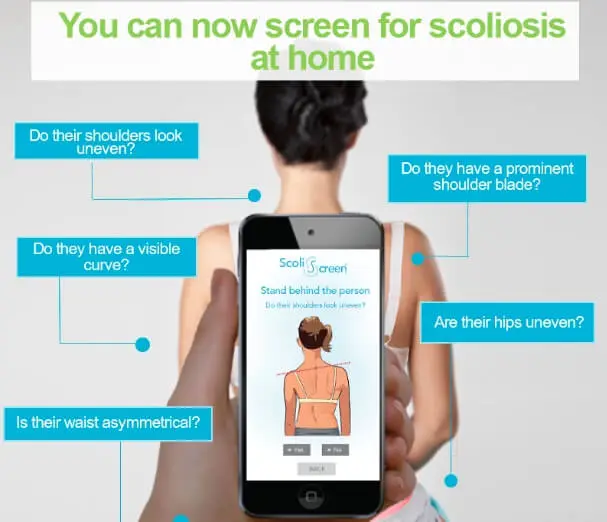The significance of spinal health is often underestimated until serious issues prompt urgent attention. This neglect can lead to worsening spinal conditions, causing unnecessary pain and distress. Home spinal screening offers a practical approach to detect potential spinal problems early, allowing for timely preventive measures and treatment.
Significance of Spinal Screening
The spine supports the body’s weight and protects the spinal cord and nerve roots. Spinal issues can cause severe pain, functional impairments, or even disabilities, greatly affecting one’s quality of life. Early detection and treatment are crucial to prevent conditions from worsening. For example, idiopathic scoliosis can be managed effectively if detected early in childhood or adolescence, reducing its long-term impact.
Spinal problems also affect mental and social well-being, often leading to feelings of inferiority and anxiety. Regular spinal screening helps protect physical health and improves mental and social well-being.
Feasibility of Home Spinal Screening
Home spinal screening is a feasible and convenient method for monitoring spinal health, offering several benefits over traditional medical screenings:
- Accessibility: Home screenings are easier to perform and more accessible compared to professional medical institutions.
- Cost-Effectiveness: These screenings require minimal additional expenses and avoid costs associated with professional personnel and equipment.
- Frequency: Home screenings can be conducted more frequently, allowing for timely detection of potential issues.
- Convenience: Screening can be done at home, accommodating individual schedules and health needs.
- Proactive Health Management: Regular screenings foster personal responsibility and proactive health management.
Practice of Home Spinal Screening
To effectively conduct home spinal screenings:
- Learn Proper Methods: Understand the correct steps and techniques through guidance from healthcare professionals or educational materials. This includes observing posture, measuring height, and checking for abnormal back curvature.
- Conduct Regular Screenings: Regular screenings are recommended, especially during childhood and adolescence. This helps detect potential issues early and implement preventive measures.
- Observe Posture and Curvature: Ensure that posture is upright and back curvature appears normal. Consult healthcare professionals if abnormalities are observed.
- Track Results: Record screening results in a health diary or mobile app, including height, weight, and posture observations. This helps monitor health status and detect changes.
Challenges and Limitations
Home spinal screening faces several challenges:
- Quality Control: Maintaining accuracy and consistency in home screenings requires proper training and guidelines.
- Equipment Limitations: Home screening may lack specialized equipment found in clinical settings, limiting detection capabilities.
- Lack of Professional Oversight: Without professional supervision, there is a risk of missed diagnoses or misinterpretation of results.
- Follow-Up Care: Identifying issues is only the first step; timely follow-up care is essential for effective management.
- Patient Compliance: Ensuring adherence to home screening protocols can be challenging, potentially leading to gaps in monitoring.
Introduction to Forethought’s Home Spinal Screening Products
Forethought offers home spinal screening products utilizing advanced sensor technology and intelligent algorithms. These products provide accurate measurements of spinal curvature and posture, detecting abnormalities with ease. Key advantages include:
- Accuracy: Advanced technology ensures reliable measurement of spinal curvature and posture.
- Convenience: Screenings can be performed at home without appointments, enhancing ease of use.
- Customized Service: Personalized health management plans based on individual characteristics and needs.
- Data Monitoring: Smartphone applications for real-time monitoring, health reports, and advice.
Références
- “The Importance of Early Detection of Spinal Disorders” – Voir la source
- “Home-Based Screening for Spinal Health: Feasibility and Benefits” – Voir la source
- “The Role of Spinal Screening in Preventing Spinal Disorders” – Voir la source
- “Posture and Spinal Health: Early Detection Methods” – Voir la source
- “Home Spinal Screening: Accuracy and Effectiveness” – Voir la source
- “Challenges in Home Spinal Screening: Quality and Compliance” – Voir la source
- “Technological Advances in Home-Based Spinal Screening” – Voir la source
- “Mental and Social Impact of Spinal Disorders” – Voir la source
- “Forethought’s Innovations in Spinal Health Monitoring” – Voir la source
- “Improving Spinal Health with Home Monitoring Technology” – Voir la source

